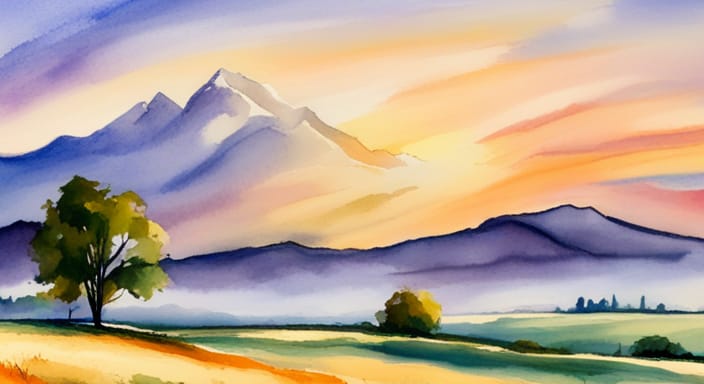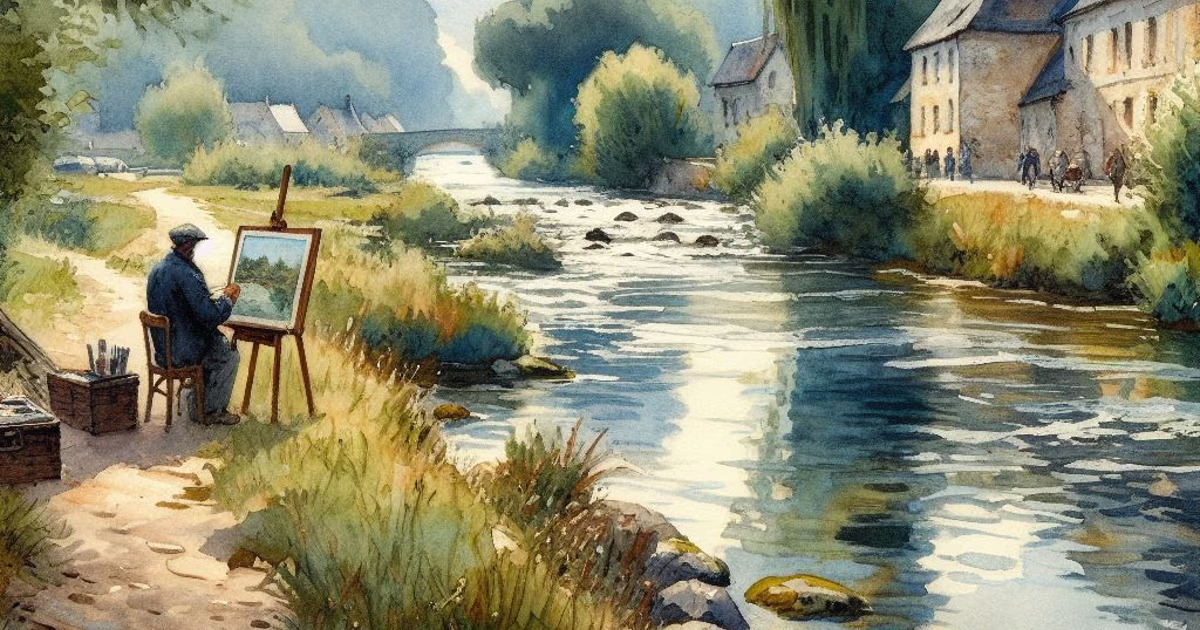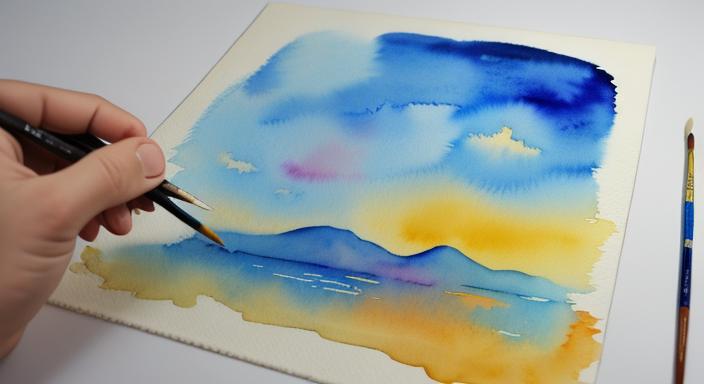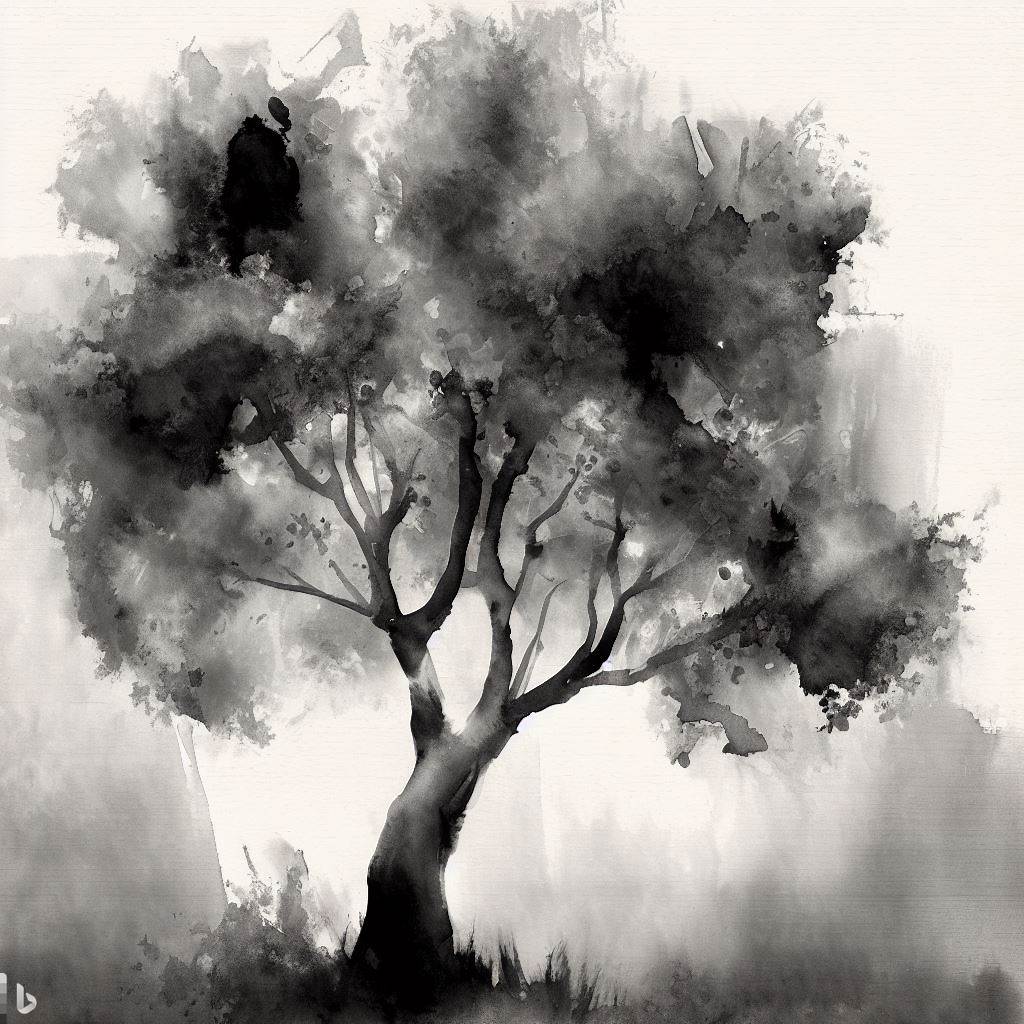Watercolor painting is a beautiful and vibrant medium that can be enjoyed by artists of all levels. One of the most important aspects of watercolor painting is mastering the different techniques that can be used to create stunning works of art. In this article, we will explore the wet-on-dry technique, one of the most commonly used techniques in watercolor painting.

Materials Required
Before we begin, it’s important to gather all the necessary materials. Here are the materials required for the wet-on-dry technique:
- Watercolor paper
- Watercolor paints
- Brushes
- Water container
- Palette
- Masking tape
- Pencil
- Eraser
Preparing the Paper
Preparing the paper is an important step in watercolor painting. Here are the steps to prepare the paper for the wet-on-dry technique:
- Choosing the right paper: Choose a high-quality watercolor paper that can handle the wet-on-dry technique.
- Stretching the paper: Stretch the paper to prevent it from buckling when it gets wet.
- Taping the paper: Tape the paper to a board to keep it flat.
- Sketching the outline: Sketch the outline of your painting lightly with a pencil.
Wet-on-Dry Technique
The wet-on-dry technique is a popular technique used in watercolor painting. Here’s a step-by-step guide to the technique [4]:
- Wet the brush: Wet your brush in the water container.
- Load the brush: Load the brush with paint from the palette.
- Apply the paint: Apply the paint to the dry paper.
- Repeat: Repeat the process until you have achieved the desired effect.
Here are some tips and tricks for the wet-on-dry technique:
- Use a dry brush to lift off excess paint.
- Use a light touch to avoid damaging the paper.
- Use a variety of brush sizes to create different effects.
- Practice on scrap paper before painting on your final piece.
Other Watercolor Techniques
There are several other watercolor techniques that you can use to create beautiful works of art. Here are some other techniques to explore:
- Wet-on-wet technique [1] [3]
- Dry brush technique
- Glazing technique
- Lifting technique
Tips for Beginners
If you’re new to watercolor painting, here are some tips [5] to help you get started with the wet-on-dry technique:
- Start with simple shapes: Begin with simple shapes to practice the technique before moving on to more complex subjects.
- Practice brush control: Practice controlling the amount of water and paint on your brush to achieve the desired effect.
- Experiment with colors: Experiment with different color combinations to create unique and beautiful paintings.
- Don’t overwork the painting: Avoid overworking the painting by letting each layer dry before adding more paint.
- Be patient: Watercolor painting requires patience, so take your time and enjoy the process.
Common Mistakes to Avoid
Here are some common mistakes to avoid when using the wet-on-dry technique:
- Using too much water: Using too much water can cause the paper to buckle and the colors to bleed.
- Overworking the painting: Overworking the painting can cause the colors to become muddy and lose their vibrancy.
- Not waiting for the paint to dry: Not waiting for the paint to dry can cause the colors to blend together and create unwanted effects.
- Using the wrong brush: Using the wrong brush can make it difficult to achieve the desired effect.
- Not planning the painting: Not planning the painting can lead to mistakes and unwanted results.
Advanced Techniques
Once you have mastered the wet-on-dry technique, you can explore other advanced techniques [2] to take your watercolor painting to the next level. Here are some advanced techniques to try:
- Layering
- Glazing
- Texturing
- Negative painting
- Color mixing
Conclusion
In conclusion, the wet-on-dry technique is an essential technique to master in watercolor painting. By following the tips for beginners, avoiding common mistakes, and exploring advanced techniques, you can create stunning works of art using this technique. Remember to practice and be patient, and don’t be afraid to experiment with other techniques to find your own unique style.
FAQs – Frequently Asked Questions
What is the difference between wet-on-dry and wet-on-wet techniques?
Can I use the wet-on-dry technique on wet paper?
What type of brushes should I use for the wet-on-dry technique?
How do I avoid overworking the painting?
- Plan your painting and have a clear vision.
- Work in layers, allowing each layer to dry before adding more.
- Use a light touch and avoid excessive scrubbing or blending.
- Step back regularly to assess the overall composition and make strategic adjustments.
Can I use the wet-on-dry technique for detailed paintings?
Citations:
[1] https://acrylgiessen.com/en/wet-on-wet-watercolor/
[2] https://www.dorisjoa.com/watercolor-painting-methods-and-techniques/
[3] https://artincontext.org/wet-on-wet-watercolor/
[4] https://www.skillshare.com/en/blog/watercolor-wet-on-wet-what-it-is-and-how-to-do-it/
[5] https://www.watercoloraffair.com/watercolor-wet-on-wet-vs-wet-on-dry-tutorial-tips-tricks/


